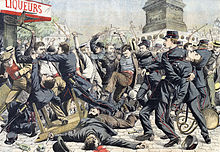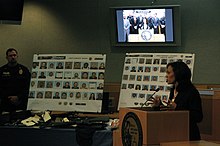Saturday, May 9, 2020
Wednesday, May 6, 2020
P
‘A profound danger’: Experts warn against broad U.S. reopening amid COVID-19 pandemic
As states lift coronavirus restrictions, none has met federal benchmarks, a health expert warns. The COVID-19 death toll in the U.S. surpasses 73,000.
More than 40 states will have reopened their economies in some capacity by the weekend, backed by President Trump’s urging of Americans to become “warriors” and fight COVID-19 not by sheltering in place but by leaving their homes again.
But as images circulate of sunbathers returning to beaches, revelers enjoying Cinco de Mayo fun and armed protesters demanding their governors open up businesses, public health experts Wednesday presented lawmakers with their own picture of what the country's immediate future should look like.
“It’s clear to me we are at a critical moment of this fight," Johns Hopkins University epidemiologist Caitlin Rivers told the House Committee on Appropriations on Wednesday.
"We risk complacency in accepting the preventable deaths of 2,000 Americans each day, we risk complacency in accepting that our healthcare workers do not have what they need to do their jobs safely, and we risk complacency in recognizing that without continued vigilance we will again create the conditions that led to us being the worst-affected country in the world.”
Even with Trump debating Wednesday how the White House coronavirus task force would be used going forward — this week he suggested shutting down the group of advisors, before changing course — Rivers reminded the committee of the four criteria the panel said should be met before a state starts to reopen:
These striking photos reveal how California is changing
The number of new cases must decline for at least two weeks; the state must be able to perform contact tracing on any new cases; there has to be enough testing to diagnose any person with symptoms; and the healthcare system must have the capacity to treat all patients, not just those with COVID-19.
“To my knowledge, there are no states that meet all four of those criteria,” Rivers said.
The committee had already heard from Dr. Thomas Frieden, the former director of the Centers for Disease Control and Prevention, who laid out 10 “plain truths” about the coronavirus. He predicted there would be 100,000 U.S. deaths by the end of May — the toll surpassed 73,000 Wednesday, according to Johns Hopkins University — and cautioned that this is just the beginning of a battle that could rage for not months, but years.
“We are all so impatient to restart our activities,” Frieden told the committee Wednesday morning. “Sheltering in place is a blunt but effective weapon. … We have to find balance between restarting our economy and letting the virus run rampant.
“Open-versus-closed is not a dichotomy. It’s more accurate to think of a dimmer dial than an on-off switch, with gradations to avoid undue risk. Another false dichotomy is between public health and economic security. The very best way to get our economy back is to control the virus, and economic stability is incredibly important to the public’s health.”
In the United States, every state now finds itself somewhere different than its neighbors on the reopening spectrum. A person living near a border may be able to get a haircut on one side of the state line but not the other.
Scientists say a now-dominant strain of the coronavirus could be more contagious than original
Hawaii shares no border and, after two weeks of daily reports showing new cases of coronavirus infection in the single digits, will partially reopen Thursday, Gov. David Ige said. Businesses including shopping malls, carwashes and pet groomers will be allowed to open with social distancing measures. A 14-day quarantine for travelers flying into Hawaii remains in effect.
Washington state, which was hit early by the coronavirus and moved quickly to shutter businesses and schools, reopened parks and golf courses Tuesday. State legislators filed suit to challenge Gov. Jay Inslee’s decision to keep schools, churches and nonessential businesses closed.
A similar suit was filed Wednesday against Gov. Gretchen Whitmer in Michigan, where armed protesters have demonstrated inside the state Capitol in Lansing.
In Georgia, where Gov. Brian Kemp reopened large parts of the economy April 27, Atlanta Mayor Keisha Bottoms told CNN on Tuesday that she was "disappointed" to see crowds congregating on streets to celebrate Cinco de Mayo.
In New York City, the epicenter of the COVID-19 pandemic, Mayor Bill de Blasio only began to address the idea of reopening, explaining during his daily briefing Wednesday that “moderation” would be the key to success as 109 more people were admitted to city hospitals for suspected COVID-19 and 599 were being treated in intensive care units.
“You’ve got parts of the country where the cases are going up. That’s a profound danger,” De Blasio said. “This is far from over. The president needs to understand the coronavirus is not going to go away. ... He is losing touch with reality and that is very, very dangerous.”
'A pure hypocrite': De Blasio blasts Trump over coronavirus aid
De Blasio said that he is creating 10 “sector advisory councils” made up of representatives from the community at large to advise the city on the best practices for reopening when the data back up that decision.
In a move symbolic of the profound societal change COVID-19 has already created, New York City subways were shut down for several hours for the first time ever Tuesday night so that they could be properly disinfected.
De Blasio said he expected that the subway would be closed overnight for months and that the return of 24-hour service could represent something bigger about how New Yorkers have fought the virus. He said he hopes the subway will return to normal by September, when schools may open again across the city.
“That’s one of these things that will signal that New York City is back in a really strong way,” De Blasio said.
At his Wednesday morning briefing, New York Gov. Andrew Cuomo displayed a graphic that showed the curve of New York City’s cases going down while the curve of the rest of the United States — removing the city’s data from the metric — was still going up.
Reopening L.A. will be slow as coronavirus cases and deaths keep mounting
And yet most of those states had decided to reopen.
“To me, that vindicates what we’re doing here in New York, which says follow the science, follow the data,” Cuomo said. “I’m focusing on the number of new cases, because with everything we’ve done, closed schools, closed businesses, everyone shelter at home, you still have 600 new cases that walk in the door yesterday. Where are those new cases coming from?”
Cuomo said hospitals have been trying to help the state answer that question recently. One early data point that was jarring: 66% of those surveyed who tested positive had been staying at home, compared with 18% coming from nursing homes. Only 4% of those infected had taken public transportation.
“There is not a group we can target with this information,” Cuomo said. “It reinforces what we’ve been saying, that much of this comes down to what you do to protect yourself. The government has done what it could, society has done everything it could; now it’s up to you.”
New York state’s death toll rose by 232 Wednesday, a larger increase than the day before, bringing the state total to more than 25,200, according to Johns Hopkins. New Jersey Gov. Phil Murphy announced 308 new deaths for a total of more than 8,500.
“It’s a painfully slow decline,” Cuomo said. “When people talk about how good things are going and the decline and progress, that’s all true. It’s also true that 232 people were lost yesterday, and that’s 232 families that are suffering today.”
The Associated Press contributed to this report.
Must-read stories from the L.A. Times
Get all the day's most vital news with our Today's Headlines newsletter, sent every weekday morning.
Sunday, May 3, 2020
Racism & Gang Culture Follow The Same Protocol
GANG CULTURE & RACISM FOLLOW THE SAME PROTOCOLS.
Racism in the United States
| Part of a series of articles on |
| Racial segregation |
|---|
 |
| Segregation by region |
| Similar practices by region |
Contents
Racism[edit]
Definition[edit]
History[edit]

Current numbers[edit]


